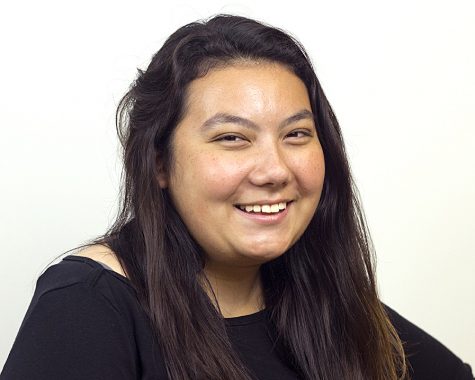Workgroup Review Committee looks at re-organizing Eastern into 5 colleges
January 7, 2018
At the latest meeting of the committee reviewing Workgroups no. 8 and 9’s recommendations during the vitalization project, members reviewed a draft of their own suggestions, which includes a reorganization of the university into five colleges.
This five-college proposal would include a College of Health and Human Services; a college for Science, Technology, Engineering and Math, or STEM; Education; the Lumpkin College of Business and the College of Arts and Humanities, with a school of fine, performing and applied arts underneath it. The graduate school and school of continuing education would be combined into one unit in the group’s draft recommendation.
There are currently four colleges, the College of Arts and Humanities, the Lumpkin College of Business and Applied Sciences, College of Sciences and the College of Education and Professional Studies.
The proposal is based of one of the recommendations from Workgroup no. 9, which originally gave three options for the university’s reorganization. The original options were keeping the current four-college structure, changing to a new four-college structure with an arts and sciences; business and technology; education; and health and human services college, or going with the five-college system.
The committee picked the workgroup’s five-college system and made some modifications to it, committee chair Billy Hung said.
In the proposal as a whole, Hung said the committee expanded on some of Workgroup no. 8 and 9’s recommendations.
“We kind of took some and merged some of them, so that’s the part that’s different from what they had,” Hung said.
He said with some options given by Workgroups no. 8 and 9, possible additions came up, but the committee did its best to stick to the original proposals.
“We felt it was important to keep to the main structure of what (Workgroups no.) 8 and 9 have proposed,” Hung said.
Management professor Michael Dobbs mentioned that when the president addressed the school of business, he said he saw business and technology being together.
He asked the group if they wanted to make a strong case for a STEM college and a separate school of business, or if they were OK considering the most important thing to them was creating a College of Health and Human Services.
Hung said the reason there was debate over where technology belongs is because it includes “both sides.”
“It includes the academic side and it also includes the IT side,” he said.
English professor and coordinator of women’s, gender and sexuality studies Jeannie Ludlow mentioned that in terms of recruitment, STEM is something that looks familiar to high school students.
Stephen Lucas, interim associate dean of the College of Education and Professional Studies, said language in the proposal can still recommend the STEM College, but the health college is the “big, flashy thing” the university needs.
In the proposal’s description, the group could add more verbiage to justify its reasoning for putting the colleges where they are, Hung said.
In making the proposals, he said the committee tried making it so no additional costs would be required to make additional changes.
“It might be you have to move one position from one area to the other, that way you don’t have to create the new position,” he said. “We tried to keep it revenue-neutral, especially in the early years, because we’re still recovering from the last two years. It’s important that we recommend changes that can be done immediately and have a meaningful impact to make EIU better.”
Cassie Buchman can be reached at 581-2812 or cjbuchman@eiu.edu.

![[Thumbnail] Eastern's Old Main was quiet Thursday morning while educators who had left the office to strike picketed outside.](https://www.dailyeasternnews.com/wp-content/uploads/2025/04/Strike_01_LT_O-800x1200.jpg)












![[Thumbnail Edition] Senior Foward Macy McGlone, getsw the ball and gets the point during the first half of the game aginst Western Illinois University,, Eastern Illinois University Lost to Western Illinois University Thursday March 6 20205, 78-75 EIU lost making it the end of their season](https://www.dailyeasternnews.com/wp-content/uploads/2025/03/WBB_OVC_03_O-1-e1743361637111-1200x614.jpg)














![[thumbnail edition] Assistant Coach of the Linebackers, Rodman Noel talking to the linebackers about their positions at O'Brien Field on the Eastern Illinois University campus, Charleston Ill.](https://www.dailyeasternnews.com/wp-content/uploads/2025/04/FB_24_O-1-e1744671213207-1200x609.jpg)
![[THUMBNAIL EDITION] (From left to right) Head football coach Chris Wilkerson works with his son student assistant coach Peyton Wilkerson at football practice at O'Brien Field on the Eastern Illinois University campus on Thursday.](https://www.dailyeasternnews.com/wp-content/uploads/2025/04/FB_25_O-1-e1744234837107-1200x596.jpg)









































